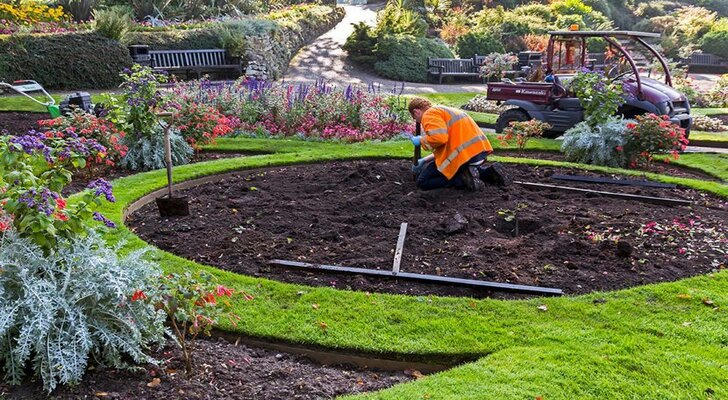Cultivating Expertise: How to Become a Certified Horticulturalist
As global interest in sustainable living, urban greening, and environmental stewardship rises, the role of trained horticulturalists has never been more vital. A horticulturalist certification is not only a professional credential—it is a gateway to technical mastery, career growth, and meaningful contributions to ecosystems and communities alike.

What Is the Role of a Certified Horticulturalist?
A certified horticulturalist applies scientific knowledge to the cultivation and care of plants for food, aesthetic, and ecological purposes. This includes managing soil health, diagnosing plant diseases, planning landscapes, and developing sustainable growing systems.
Professionals with this certification work in diverse environments: city parks, organic farms, research labs, greenhouses, nurseries, and conservation projects. Their expertise bridges biology, environmental science, and practical landscaping, making them valuable in both public and private sectors.
Case Example: In California, certified horticulturalists are often employed by municipal landscaping departments to design drought-tolerant gardens that align with state water conservation regulations.
Why Certification Matters in Horticulture
In an industry driven by both hands-on skill and scientific understanding, certification formalizes a horticulturalist’s capabilities. It verifies that the individual meets specific professional standards and has the training to manage complex plant care and land management tasks.
Employers increasingly look for certified professionals when hiring for positions involving landscape planning, urban agriculture, ecological restoration, or regulated pesticide use. In many regions, certification is required for roles involving public safety or environmental compliance.
Moreover, certification enhances your credibility when working independently as a consultant or running your own horticulture business.
Routes to Certification: Education and Training
There are multiple educational and professional pathways toward certification, depending on your career goals and regional requirements.
1. Professional Organizations
Respected horticultural bodies, such as the American Society for Horticultural Science (ASHS) and National Association of Landscape Professionals (NALP), offer industry-recognized certifications. These usually require candidates to pass exams covering plant science, pest management, and soil systems, along with proof of field experience.
Case in Point: The ASHS Certified Horticulturist program is recognized across North America and includes a rigorous written exam that covers six core areas of horticultural knowledge.
2. College and Technical Programs
Community colleges and agricultural institutes often offer one- or two-year certificate programs in horticulture. These typically combine classroom instruction with hands-on field training and cover topics like greenhouse management, plant ID, irrigation systems, and organic growing techniques.
3. Regional and Government Programs
Many regions offer government-endorsed certification programs. For example, in Canada, the Horticultural Technician Certification Program is recognized by industry employers and regulated by provincial apprenticeship boards.
4. Online and Hybrid Options
Reputable online programs—such as those from Oregon State University or the University of Georgia—provide flexible learning formats with recorded lectures, virtual labs, and proctored exams. These are ideal for working professionals or those in remote areas.

What You’ll Learn in a Certification Program
Horticulture certifications focus on both theoretical knowledge and practical application. Common course content includes:
Plant Identification and Classification: Learning to recognize hundreds of plant species by form, foliage, and climate suitability.
Soil and Water Science: Understanding how pH, drainage, and organic matter affect plant health and productivity.
Pest and Disease Control: Applying integrated pest management (IPM) strategies using biological and chemical controls.
Landscape Design Principles: Creating aesthetically pleasing and sustainable outdoor environments using design software and field techniques.
Propagation and Greenhouse Management: Mastering techniques like grafting, seeding, and climate control in enclosed environments.
Sustainable Practices: Emphasizing native planting, organic methods, and ecological restoration.
Many programs conclude with a capstone project, case study, or field portfolio that demonstrates the learner’s ability to apply their knowledge in real-world settings.
Certification Process: From Learning to Licensure
While program structures vary, the general certification process includes:
Selecting a Program: Choose a certification that aligns with your regional job market and career interests.
Meeting Eligibility Requirements: Some certifications require previous work experience or completion of prerequisite courses.
Completing Coursework: Engage in classroom or online training, labs, and fieldwork assignments.
Passing the Final Exam: Exams typically test plant science, landscape theory, safety regulations, and practical know-how.
Field Experience Verification: Some programs require documented horticulture hours under a licensed supervisor.
Continuing Education: To keep your certification current, many certifying bodies require annual continuing education credits.
Opportunities After Certification
With certification in hand, horticulturalists are qualified for a wide range of careers in agriculture, environmental services, and urban development. Common roles include:
Landscape Manager or Designer
Horticulture Consultant
Parks and Grounds Supervisor
Nursery or Greenhouse Manager
Sustainable Agriculture Technician
Plant Health Specialist
Case Example: A certified horticulturalist in New York helped a local school district establish an edible garden program that educates students on food production and sustainability—combining public education with horticultural expertise.
For entrepreneurs, certification can also provide the credibility needed to launch a private landscaping company or native plant nursery.

Final Thoughts
Becoming a certified horticulturalist is a strategic step for anyone looking to build a lasting and impactful career in the green industry. It not only strengthens your technical skills and scientific knowledge but also enhances your standing with employers, clients, and regulatory bodies.
As environmental challenges grow, so does the need for trained professionals who understand how to care for our natural and cultivated landscapes. Certification is more than a credential—it's a commitment to excellence, sustainability, and leadership in the field of horticulture.
